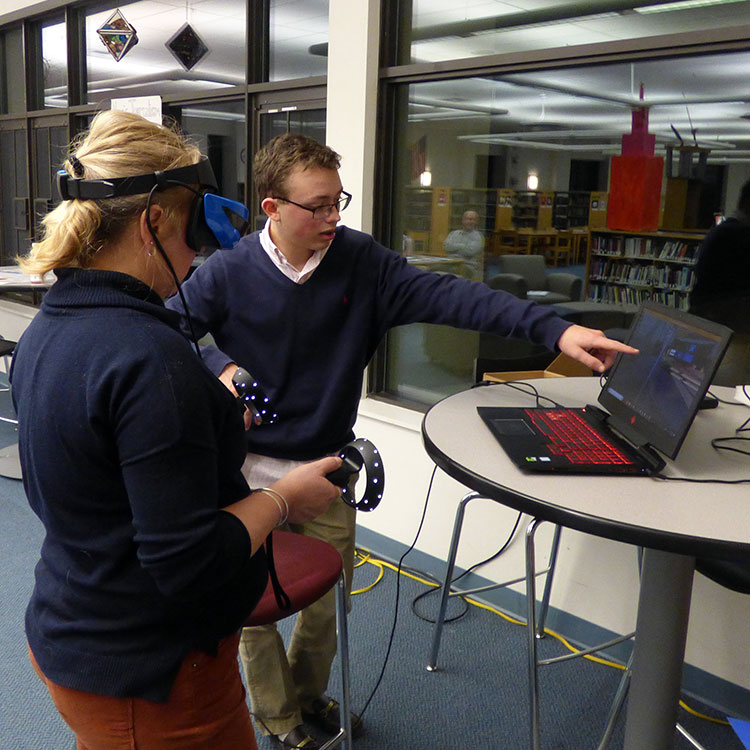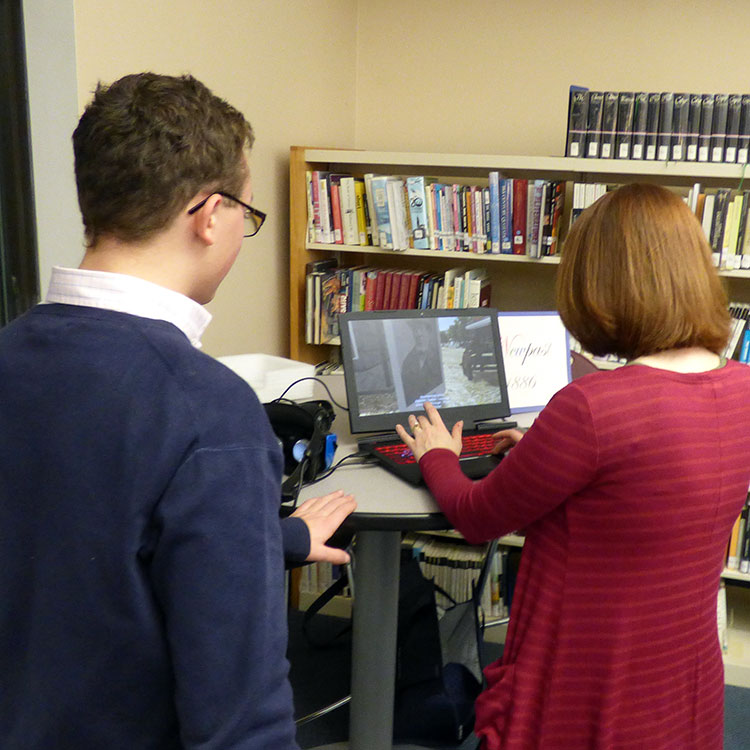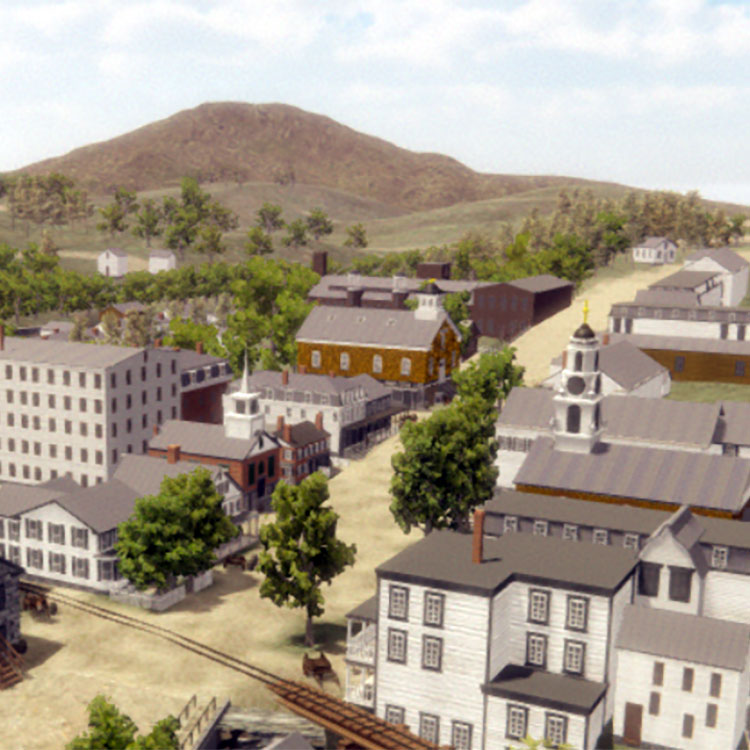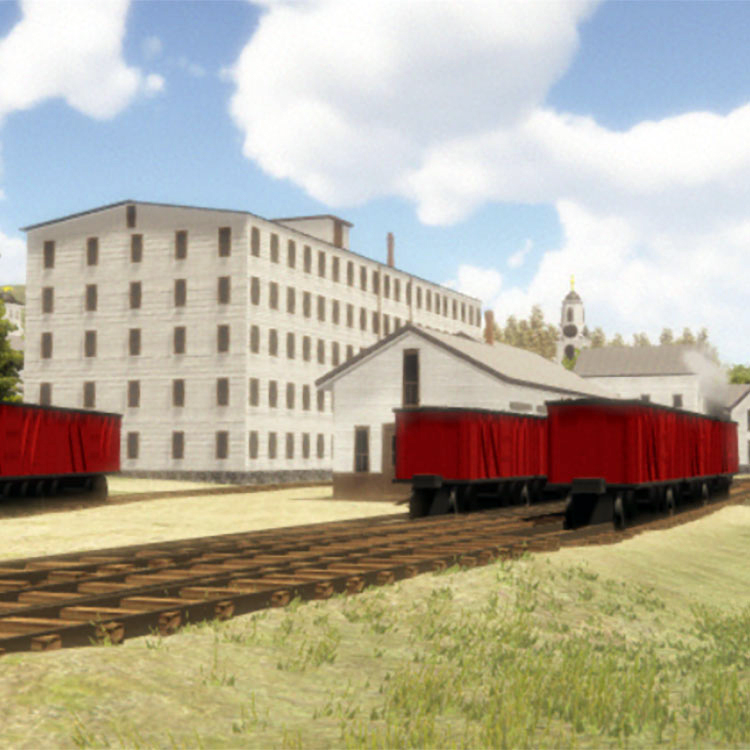When ConVal held its Celebration of Learning on Thursday, there were many interesting examples of student work on display. One of them was titled “Newpast: Peterborough 1886.” According to its creator Brigham Boice, a sophomore, Newpast is a video game in which you can view the town of Peterborough in 1886 in an interactive, computer-based setting, allowing you to meet people from that time period and learn about the buildings and design of the town.
What inspired you to create Newpast?
I was inspired by my love of history, art, and technology to create Newpast. I have always had a desire to learn about the history of Peterborough since my fourth-grade school year when I created a class presentation covering the history of trains in downtown Peterborough. This led me to create pencil and ink drawings depicting downtown Peterborough in the late 1800’s to early 1900’s. These are now available to view at the Trumpet Art Gallery in town. In my 6th grade year my father introduced me to the Unity 3D gaming engine, and he suggested I use it to create something that I was interested in. That is where the first idea for Newpast came from.
What program/s are you using to create these immersive VR scenarios?
I use a free gaming engine called Unity 3D and Visual Studio. Both are free and open to anyone who wants to use them. The program allows me to do as little detail in my game or as much as I like. For instance, to build the Peterborough Town House as it looked in 1886 I wanted to be sure and add as much detail as possible. Using Unity, I was able to add one brick at a time, which resulted in the finished product looking as realistic as possible. Other things like railroad tracks and the train cars I am continually working on to give it as authentic a look as possible. I also added a new feature which allows the user to view buildings in the game and view a picture of what the buildings looks like today, and their placement in the town.
How did you learn to use these programs?
My knowledge of the Unity engine was developed through YouTube instructional videos and by working together with my father who is also a programmer. It amazed me how many people created videos on how to use the Unity engine, it was very helpful, and had me programming the basics very quickly. My father also had worked with the Unity engine for his job, and we are able to discuss and work through problems I have when using the engine, he helps when I have hard programming questions. Once I had used the programming engine for two years my father and I attended a weeklong Unity 3D conference in Los Angeles, California. The conference was a week filled with mini sessions and lectures on how to fully use Unity and an introduction of some new features.
Where did you get the historically accurate photos that helped create the immersive VR scenarios?
To find all the picture and historical information about the time, I studied multiple books and images of Peterborough. I have been able, through used book and antique stores, to amass a collection of books and pictures and postcards on Peterborough. I have also spent time at the Monadnock Center for History and Culture. At the Monadnock Center, I worked with Michelle Stahl and her staff to research photos I needed and was able to view files and archived photos to help me correctly design the town. I also used a book called “Peterborough In Pictures” which was published in 1976 by the Peterborough Bicentennial Committee. This book contained the pictures and information on the “Apostolic Twelve” as they were called. This was a group of men who lived in Peterborough around the time of 1876. They were asked by a local photographer named Ollis to show up in their everyday working clothes for the photos and he choose people from all different professions. The idea was to give an idea of the type of person who lived in Peterborough. I have incorporated the portraits into my game and the user can roam around the town and have a chance to meet each of them and learn a little about them.
How long did it take you to create the VR scenarios about Peterborough?
It has taken me about 270 hours and counting to create Peterborough for Newpast: Peterborough 1886. Although this doesn’t count the three years beforehand that I spent learning Unity and C#.
What are your future plans using VR? Do you aspire to be a game designer?
Some of my future plans using the Unity 3D engine would be to create more simulations like Peterborough 1886 or maybe historic battle simulations. For more games like Peterborough 1886, I might do other towns within the New England region, or even cities like Nashua or Boston. For battle simulations I might do the Battle of Bunker Hill or Saratoga. The concept I would like to develop is that learning about the past and history is interesting and by having interactive games people of all ages can learn about how we used to live. Especially for students who like to learn through an interactive source, these games could bring the towns of the American Revolution or the Battle of Gettysburg alive for them.
I will be attending another Unity Conference this October in Los Angeles, CA to future my knowledge of the Unity Engine, learn about new software releases for the game, and to help promote my game and ideas to get feedback from other programmers.






